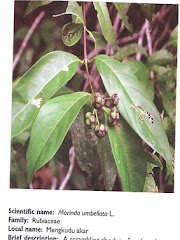Guidelines for Protected Area Management Categories
Background
Through its Commission on National Parks and Protected Areas (CNPPA), IUCN has given international guidance on the categorisation of protected areas for nearly a quarter of a century. The purposes of this advice have been:
to alert governments to the importance of protected areas;
to encourage governments to develop systems of protected areas with management aims tailored to national and local circumstances;
to reduce the confusion which has arisen from the adoption of many different terms to describe different kinds of protected areas;
to provide international standards to help global and regional accounting and comparisons between countries;
to provide a framework for the collection, handling and dissemination of data about protected areas; and
generally to improve communication and understanding between all those engaged in conservation.
As a first step, the General Assembly of IUCN defined the term 'national park' in 1969. Much pioneer work was done by Dr Ray Dasmann, from which emerged a preliminary categories system published by IUCN in 1973. In 1978, IUCN published the CNPPA report on Categories, Objectives and Criteria for Protected Areas, which was prepared by the CNPPA Committee on Criteria and Nomenclature chaired by Dr Kenton Miller. This proposed these ten categories:
I Scientific Reserve/Strict Nature Reserve
II National Park
III Natural Monument/Natural Landmark
IV Nature Conservation Reserve/Managed Nature Reserve/Wildlife Sanctuary
V Protected Landscape
VI Resource Reserve
VII Natural Biotic Area/Anthropological Reserve
VIII Multiple Use Management Area/Managed Resource Area
IX Biosphere Reserve
X World Heritage Site (natural)
This system of categories has been widely used. It has been incorporated in some national legislation, used in dialogue between the world's protected area managers, and has formed the organisational structure of the UN List of National Parks and Protected Areas (which in recent editions has covered Categories I-V).
Nonetheless, experience has shown that the 1978 categories system is in need of review and updating. The differences between certain categories are not always clear, and the treatment of marine conservation needs strengthening. Categories IX and X are not discrete management categories but international designations generally overlain on other categories. Some of the criteria have been found to be in need of a rather more flexible interpretation to meet the varying conditions around the world. Finally, the language used to describe some of the concepts underlying the categorisation needs updating, reflecting new understandings of the natural environment, and of human interactions with it, which have emerged over recent years.
In 1984, therefore, CNPPA set up a task force to review the categories system and revise it as necessary. This had to take account of several General Assembly decisions dealing with the interests of indigenous peoples, wilderness areas and protected landscapes and seascapes. The report of the task force, which was led by the then Chair of the CNPPA, Mr Harold Eidsvik, was presented to a CNPPA meeting at the time of the IUCN General Assembly in Perth, Australia, in November 1990. It proposed that the first five categories of the 1978 system should form the basis of an up-dated system; it also proposed the abandonment of categories VI-X.
The report was generally well received. It was referred to a wider review at the Fourth World Congress on National Parks and Protected Areas, at Caracas, Venezuela, February 1992. The Congress workshop to which the topic was assigned also had before it an analysis by IUCN consultant, Mr John Foster. Members of the workshop reviewed this material and recommended the early production of guidelines to replace those adopted in 1978. This was formally affirmed in Recommendation 17 of the Congress. Revised guidelines were then prepared and reviewed by the CNPPA Steering Committee and the IUCN Council in accordance with Recommendation 17. The result is these present guidelines, which incorporate general advice on protected area management categories (Part I), consider each of the categories in turn (Part II), and include a number of examples from around the world showing the application of the different categories (Part III).
These present guidelines, therefore, represent the culmination of an extensive process involving a wide-ranging review within the protected area constituency over a number of years. The opinions of those involved have been many. Some have recommended radical changes from the 1978 guidance; others no change whatsoever. Some have urged that there be regional versions of the guidelines; others that the categories be rigidly adhered to everywhere.
The conclusion is guidelines which:
adhere to the principles set forth in 1978 and reaffirmed in the task force report in 1990;
update the 1978 guidelines to reflect the experience gained over the years in operating the categories system;
retain the first five categories, while simplifying the terminology and layout;
add a new category;
recognise that the system must be sufficiently flexible to accommodate the complexities of the real world;
illustrate each of the six categories with a number of brief case studies to show how the categories are being applied around the world; and
provide a tool for management, not a restrictive prescription.
أَلَمْ تَرَ أَنَّ اللَّهَ يُسَبِّحُ لَهُ مَنْ فِي السَّمَاوَاتِ وَالأرْضِ وَالطَّيْرُ صَافَّاتٍ كُلٌّ قَدْ عَلِمَ صَلاتَهُ وَتَسْبِيحَهُ وَاللَّهُ عَلِيمٌ بِمَا يَفْعَلُونَ Tidakkah kamu tahu bahwasanya Allah: kepada-Nya bertasbih apa yang di langit dan di bumi dan (juga) burung dengan mengembangkan sayapnya. Masing-masing telah mengetahui (cara) solat dan tasbihnya, dan Allah Amat Mengetahui apa yang mereka kerjakan. an-Nur:41
Tazkirah
Sami Yusuf_try not to cry
mu'allim Muhammad Rasulullah Sallallahu alaihi waSalam
ummi_mak_mother_ibu_Sami Yusuf
zikir Tok Guru Nik Abdul Aziz Nik Mat Mu'allimul Mursyidi
syeikh masyari afasi
ruang rindu
song
Arisu Rozah
Usia 40

Mudah mudahan diluaskan rezeki anugerah Allah
usia 40 tahun

UPM

Kuatan Pahe Darul Makmur
pemakaian serban semsa menunaikan solat_InsyaAllah ada sawaaban anugerah Allah
Rempuh halangan

Abah_menyokong kuat oengajian Ijazah UPM

usia 39 tahun

usia 23 tahun_UPM
An_Namiru

Ijazah Pengurusan Hutan UPM

General Lumber_Nik Mahmud Nik Hasan

Chengal

Tauliah

Semasa tugas dgn general lumber

PALAPES UPM

UPM

Rumah yang lawa

Muhammad_Abdullah CD
semasa bermukim di Kuatan Pahe Darul Makmur
Ijazah

air terjun

Borneo land

GREEN PEACE
GREEN PEACE
Kelang

Ahlul Bayti_ Sayid Alawi Al Maliki

Asadu_ Tenang serta Berani

atTiflatul Falasthiniin

Sayid Muhammad Ahlul Bayt keturunan Rasulullah

AnNamiru_SAFARI_Kembara

AnNamiru_resting

Hamas

sabaha anNamiru fil nahri

Namir sedang membersih

Tok Guru Mualimul_Mursyid

An_Namiru
.jpg)
Namir_istirehat
.jpg)
SaaRa AnNamiru fil_Midan
.jpg)
Renungan Sang Harimau_Sabaha AnNamiru
.jpg)
Syaraba AnNamiru Ma_A
.jpg)
AnNamiru_Riadhah
.jpg)
AnNamiru_Riadhah
.jpg)
AnNimru ma_A waladuha
Namir fil_Ghabi (sebut Robi...
Namir

AdDubbu_Beruang di hutan

Amu Syahidan Wa La Tuba lil_A'duwwi

AsSyahid

Namir

Tangkas
najwa dan irah

sungai

najwa

najwa

Kaabatul musyarrafah

unta

Jabal Rahmah

masjid nabawi

masjid quba

dr.eg

najwa dan hadhirah

along[macho]
![along[macho]](https://blogger.googleusercontent.com/img/b/R29vZ2xl/AVvXsEjuMi7D33CmR0_KXrCW2XigfLcUuQurcvtqOS139ncCwEzCyB-jUopk7QK7anADIenJEm2S0N6gAY1ubnACYXewgiAsI3rBjnLTawM39alLL-rEopOoVqn0w5WpLhPJH3hrXNtchEhgtyaI/s240/P7150023.JPG)
harissa dan hadhirah

adik beradik
Tongkat Ali

Tongkat Ali
herba kacip Fatimah
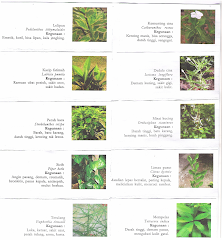
herba Kacip Fatimah
hempedu beruang
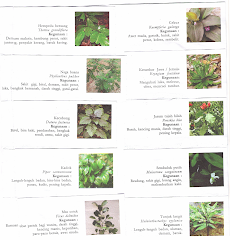
hempedu beruang
hempedu bumi

hempedu bumi
herba misai kucing

herba misai kucing
herba tongkat Ali
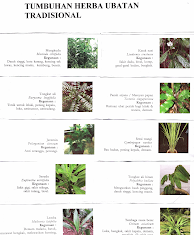.png)
Tongkat Ali
Ulama'

Ulama'
kapal terbang milik kerajaan negara ini yang dipakai pemimpin negara

kapal terbang
Adakah Insan ini Syahid

Syahid
Tok Ayah Haji Ismail

Saifuddin bersama Zakaria

Dinner....
Sukacita Kedatangan Tetamu
Pengikut
Kalimah Yang Baik

Ubi Jaga

Ubi Jaga
Arkib Blog
Burung Lang Rajawali

Chinese Sparrowhawk
Kelicap Mayang Kelapa
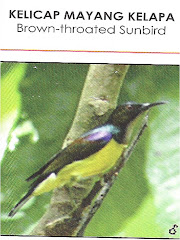
Brown-Throated Sunbird
Kopiah

Pokok Damar Minyak

Kacip Fatimah
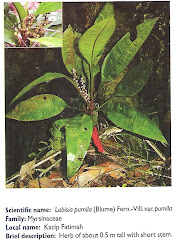
Mengkudu Akar
